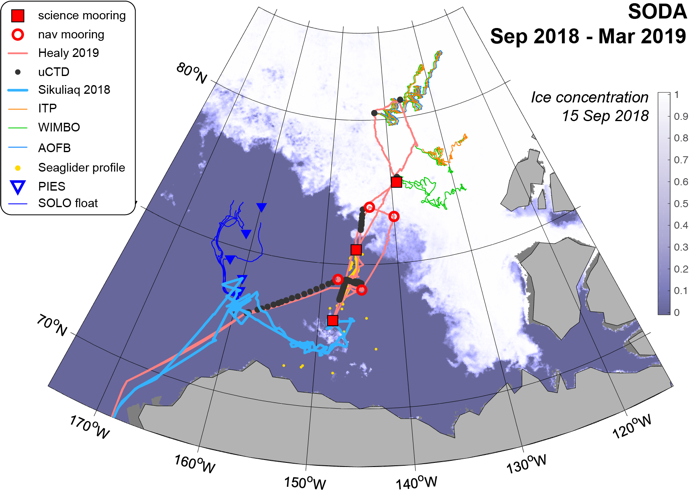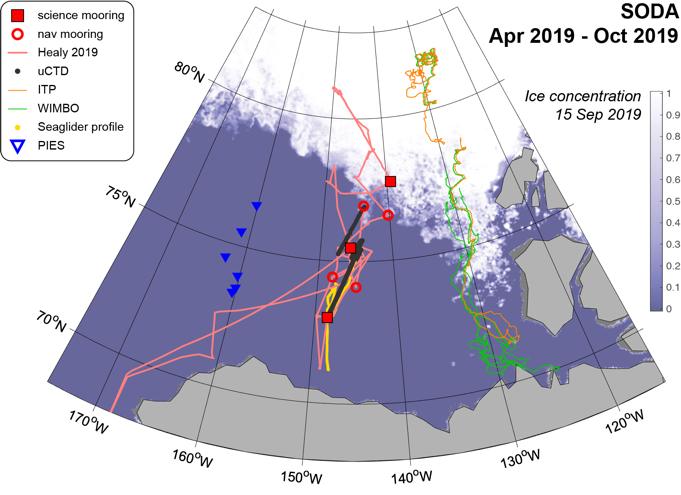Ice cover strongly modulates how atmospheric forcing imprints onto Arctic
Ocean stratification and circulation. Differences in sea ice properties,
including strength, mobility, open water fraction and bottom roughness,
likely impact the transfer of momentum and buoyancy from atmosphere to ocean.
Upper ocean vertical and horizontal structures also modulate the communication
of atmospheric/ice forcing into the ocean interior. Year-round under-ice
surveys conducted by Seagliders, combined with high‐resolution time series
provided by three heavily-instrumented moorings, will be used to investigate
the fate of atmospheric momentum and buoyancy input to the ice-ocean system.
This unique set of observations will focus on the upper 200 m to quantify the
dynamics governing mixed layer evolution, most of the internal wave spectrum,
and mesoscale/submesoscale variability in the central Canada Basin. By siting
in a region that experiences seasonal ice cover and persisting through an
entire annual cycle, the proposed observing system will capture the interplay
between atmosphere, ice and ocean over a broad range of atmospheric forcing
and ice conditions. This provides the dynamic range required to advance our
understanding of momentum and buoyancy transfer into the Arctic Ocean.

